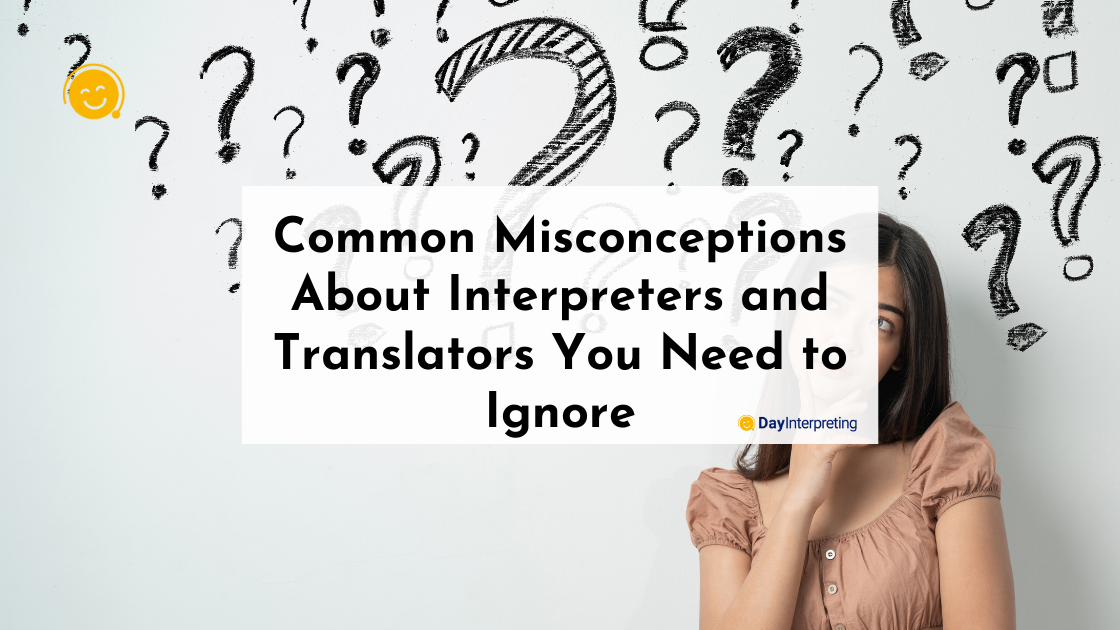The translation and interpretation industry is expanding at a breakneck pace. And the market is becoming more diverse by the day. With hundreds of professionals working within the sector, it isn’t always clear what each one of them does. That being said, people have conjured up many myths about the industry as a whole, and more specifically, about translators and interpreters. Here’s a look at some of the weirdest misconceptions about interpreters and translators everyone needs to erase from their minds ASAP.
Please Ignore THESE Misconceptions About Interpreters and Translators
Myth 1 – Any Bilingual Person Can Interpret
Not every bilingual person can be an interpreter. Yes, bilingual speakers might be fluent in more than one language. But that doesn’t necessarily qualify them as interpreters. There’s a lot of training involved on the path towards becoming a professional interpreter.
Interpreters must master translation techniques and should also be able to deconstruct linguistic components of a language to translate from one language to another accurately. Yes, bilingual speakers are fluent in two languages. But it’s often difficult for them to convey messages from one language to another. Interpreters are also masters of industry-specific vocabulary that allows them to interpret in more complicated settings like medical and legal environments.
Myth 2 – Technology Will Take Over the Role of Interpreters
Many people think that the rise of automation and artificial intelligence will reduce the need for professional translators and interpreters. But that couldn’t be further from the truth. Automation actually created even more interpreting jobs! Thanks to globalization, the world is more connected than it has ever been. With businesses embracing the international market space, there’s a growing need for interpreters. Linguists need to help bridge the language barrier. Machine translation and computer-assisted interpretation also don’t have the ability to translate the nuances of language. Nor can it work with non-verbal communication.
Myth 3 – Translators and Interpreters Have the Same Roles
Often used interchangeably, translation and interpretation are actually two vastly different activities. Translation deals with written language. Unlike interpretation, which focuses on spoken language. Translation also doesn’t occur under the same kind of time constraints associated with interpreting.
Interpreters must be able to translate in real-time scenarios. Translators, on the other hand, generally have a lot more time to find the best possible translation for specific words and phrases. Also, translators don’t have to mediate and manage interactions between two parties. But this is a vital component of an interpreter’s job.
Myth 4 – It’s Expensive to Work with an Interpreter
The rate interpreters charge largely depends on the kind of interpreting you need. In-person interpreting is the most expensive option for interpretation, but there are various options that can cater to language needs. Simply using an acquaintance or in-house staff member is a huge mistake many organizations make in the hopes of saving money. Mistranslation almost always leads to misunderstandings, which naturally lead to losses that would be much greater than if a company hired a professional interpreter from the start. Interpreting might seem like an unnecessary expense for many companies, but it is absolutely essential, and taking cost-cutting shortcuts can lead to disastrous outcomes.
Myth 5 – Everyone Speaks English, So Why do We Need Interpreters?
Even if both parties in a conversation can speak (some) English, the simple fact is that unless English is the native language of both parties, misunderstandings are bound to happen. There’s a lot of nitty-gritty that goes into language, and not everyone that understands English on a basic level really has a grasp of the nuances involved. Negotiating specifics of a business deal, technical details, legal aspects of an operation. All of these require the help of a professional interpreter to ensure that both parties fully comprehend what’s being discussed.
Conclusion
We’ve briefly discussed 5 of the most common misconceptions of interpreters and translators in this post, all of which essentially highlighted the critical importance of these language specialists. There’s a lot of practice that goes into perfecting the art of bridging the language gap, and whenever more than one language is at play, it’s always best to turn to professionals for help. If you’d like to learn more about our range of interpreting services, get in touch with Day Interpreting right now!





0 Comments